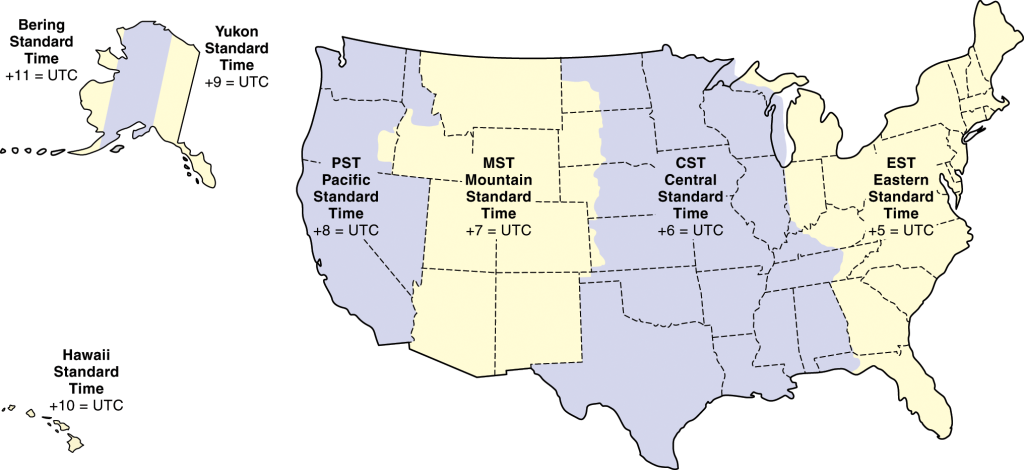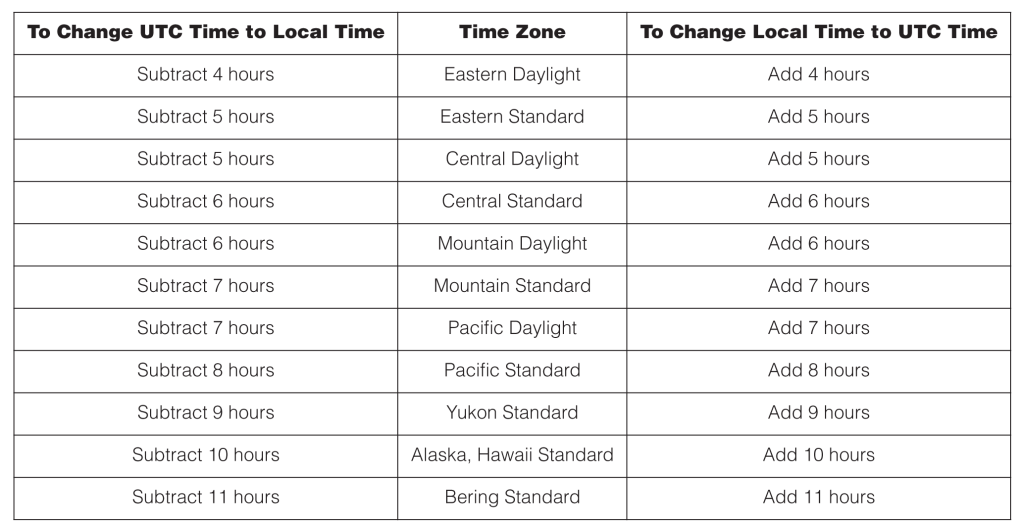Coordinated Universal Time, Universal Time Coordinated, Greenwich Mean Time, Zulu Time—I am sure you have heard these terms at some point in your flight training, but what is all of it? To keep it simple these are essentially one in the same: time corrected for seasonal variations in the earth’s rotation about the sun. As you may know, moving east or west across the lines of longitude we travel through various time zone changes. For example, 10 AM in Seattle, WA is 1 PM in New York City (3 hours ahead). This can get extremely confusing to pilots traveling across multiple time zones, so that’s why we use Coordinated Universal Time or UTC for short. All aeronautical communications across the world are expressed in UTC.

If we were to convert 10 AM in Seattle to UTC time we would get 1800 UTC. Let’s take a look at how we did that.
Step 1 is to convert our local time to the 24 hour clock.
10:00 AM Local = 1000 Local
Step 2 using the chart below we can determine our time zone conversion of + 8.
1000 + 8 = 1800 UTC
For daylight savings time you would subtract 1, so be careful you understand what time of the year it is.

You may not always have this chart available but you can always find time zone conversions listed in the A/FD under each airport.
Let’s work through a realistic scenario (at least my idea of one). A few friends and I plan on traveling to San Diego, CA from Dallas, TX. We have an afternoon golf tee time at 3 PM local pacific standard time. We have determined the flight will take us 4 hours. If we want to arrive in San Diego at 2 PM local time, when should we leave?
Step 1. Convert 2 PM to the 24 hour clock:
02:00 PM + 12 = 1400 Local
Step 2. Convert 1400 Local to UTC (refer to the chart above):
1400 + 8 = 2200 UTC
Step 3. Since we have already determined that the flight will take us 4 hours, simply subtract the travel time from the UTC time:
2200 – 0400 = 1800 UTC
Step 4. To arrive on time, we must leave Dallas by 1800 UTC. Convert this to local time by referring back to our chart. Dallas is in Central Standard Time, so we would subtract 6 hours:
1800 – 0600 = 1200 (on the 24 hour clock) or 12:00 PM local central standard time
Perfect. We would need to be wheels up in Dallas at 12 PM local. If you think about it, this makes sense too: there is a two hour time gap between the time we leave local (12 PM) and the time we arrive local (2 PM), including the two hour time zone change between Central Standard Time and Pacific Standard Time and we get 4 hours.




